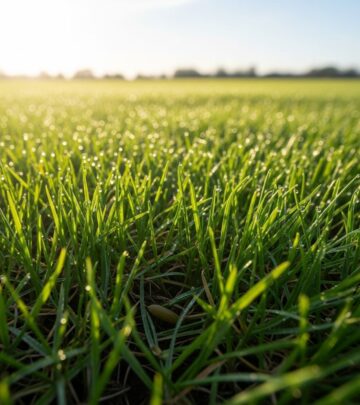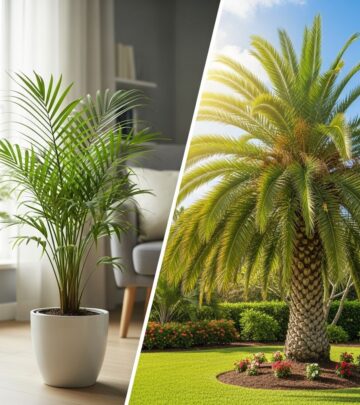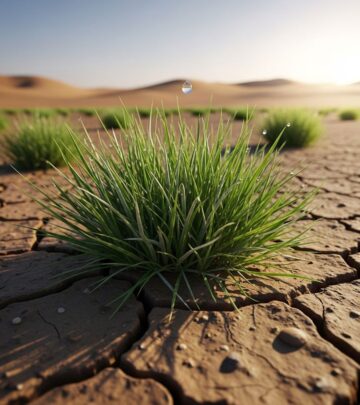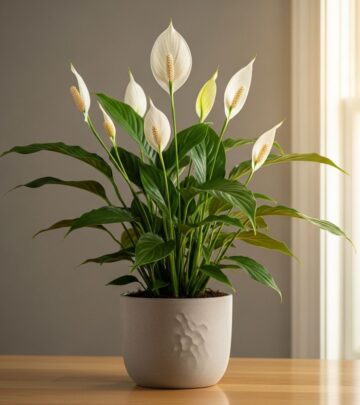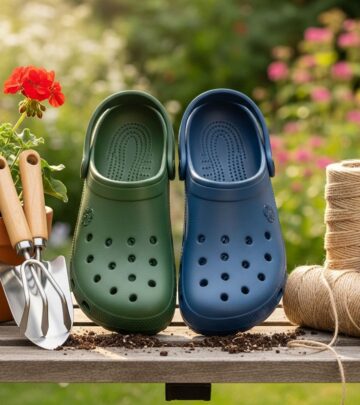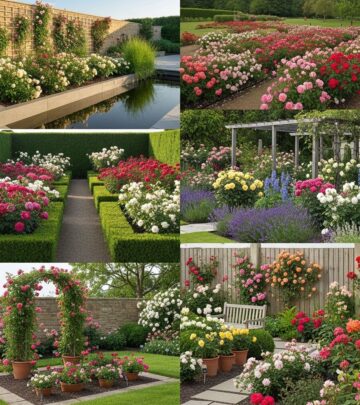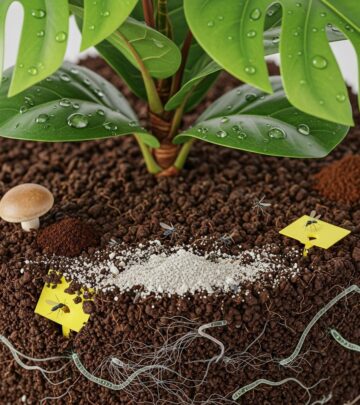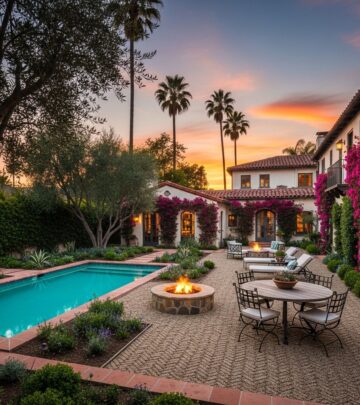Gardening 101: Dymondia (Silver Carpet) – A Low-Growing, Drought-Tolerant Ground Cover
Discover a lush, low-maintenance lawn alternative for sun-drenched, drought-prone yards.
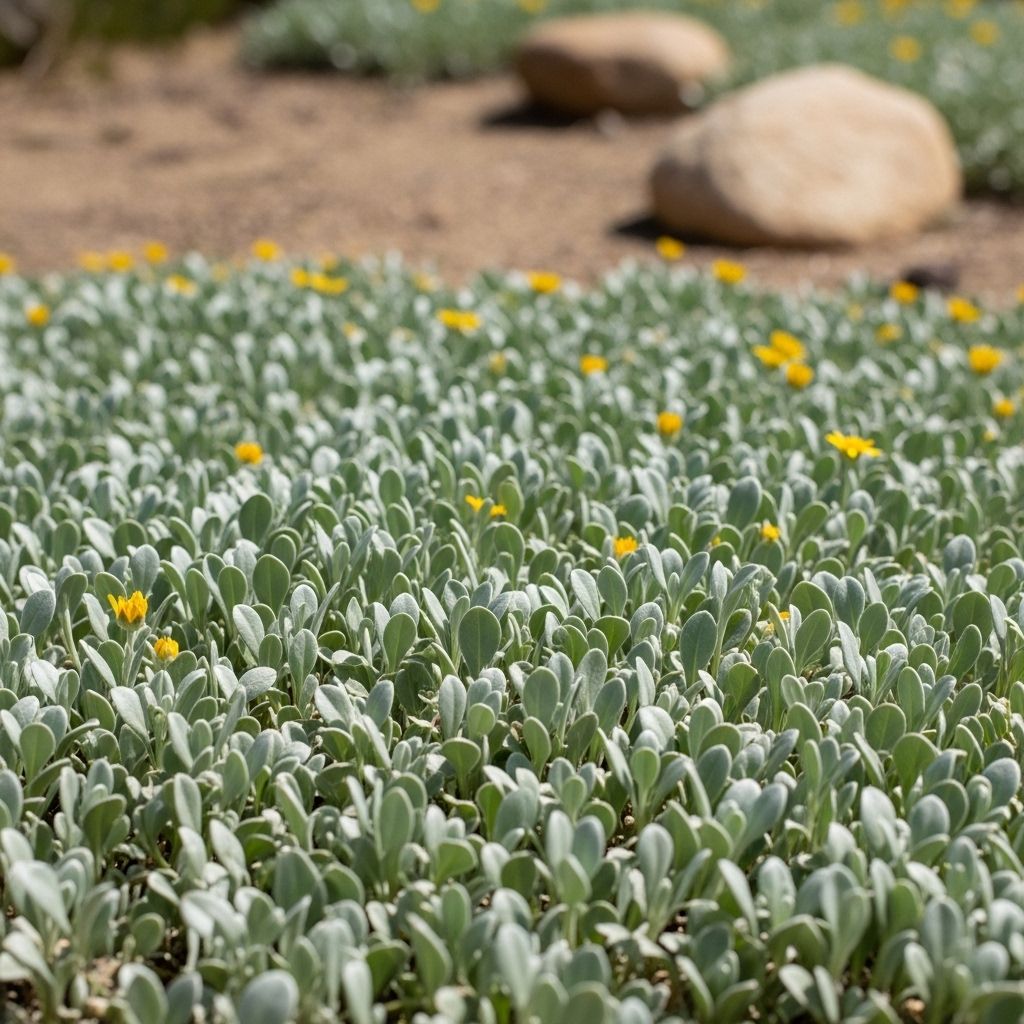
Image: HearthJunction Design Team
Gardening 101: Dymondia (Silver Carpet)
Dymondia margaretae, commonly known as Silver Carpet, is an exceptional ground cover for gardeners seeking drought tolerance, visual interest, and practical solutions for high-traffic areas. This South African native has gained considerable popularity in water-wise landscaping, offering a resilient and ornamental alternative where traditional lawns struggle.
What Is Dymondia?
Dymondia margaretae is a low-growing, mat-forming perennial that features slender, narrow, gray-green leaves with silvery undersides. Its subtle yellow daisy-like flowers appear sporadically throughout warm months, adding a delicate touch of contrast to the foliage. Adapted to hot, dry climates and poor soils, Dymondia thrives where many other ground covers fail.
- Botanical Name: Dymondia margaretae
- Common Names: Dymondia, Silver Carpet
- Origin: South Africa
- Type: Evergreen perennial ground cover
- Mature Height: 1-3 inches (2.5-7.5 cm)
- Spread: Spreads densely by rooting stems
- Foliage: Narrow, silver-backed, green leaves with a slight curl
- Flowers: Small yellow daisies (spring–summer)
Why Grow Dymondia?
Dymondia has emerged as a favorite among landscapers and home gardeners for several reasons:
- Drought Tolerance: Exceptionally efficient in low-water landscapes, ideal for xeriscape and Mediterranean gardens.
- Visual Appeal: Silvery-green foliage reflects sunlight, creating a luminous, plush appearance year-round.
- Lawn Alternative: Functions as a low-maintenance substitute for turf grass, usable even in areas with moderate foot traffic.
- Weed Suppression: Dense, mat-forming growth chokes out many common weeds once fully established.
- Versatility: Suited for use between paving stones, along paths, on berms, or as an edging plant.
How to Use Dymondia in the Landscape
Dymondia is highly versatile and lends itself to a variety of design applications:
- Between Pavers: Fills gaps attractively without encroaching aggressively onto hardscape surfaces.
- Replacing Lawns: Provides a soft, walkable surface that requires minimal water and mowing.
- Mixed Borders: Acts as a weed-suppressing underplanting for succulents and other drought-adapted plants.
- Container Planting: Suitable for trailing over the edges of pots and troughs.
Dymondia Care Requirements
| Growing Condition | Ideal | Notes |
|---|---|---|
| Sun Exposure | Full Sun to Light Shade | Prefers ample sunlight for best growth and compact habit. |
| Soil Type | Well-draining, sandy or loamy | Avoid heavy or clay soils; amend with sand/compost for drainage. |
| Watering | Low (once established) | Moderate to regular for first few months until established. |
| Climate | USDA Zones 9–11 | Tolerates light frost; protect from extended freezing. |
| Maintenance | Minimal | Occasional weeding, watering, and debris removal. |
How to Plant Dymondia
Proper site preparation and planting are key to achieving a healthy, long-lasting Dymondia ground cover:
- Soil Preparation: Loosen soil to a depth of at least 12 inches and incorporate generous organic matter (such as compost). For heavy or clay soils, blend in sand or fine gravel to enhance drainage. Soil should be softened, nutrient-rich, and amended before planting.
- Spacing: Arrange Dymondia plugs or small divisions 6–8 inches apart for faster coverage. Leave at least 6 inches between plants and adjacent hardscaping to allow for spreading.
- Planting: Remove plugs or divisions from trays, gently loosen roots, and set into prepared soil at grade level or slightly below surrounding pavers to accommodate mature height. Firm soil around plants.
- Water Well: Water immediately after planting to settle soil and support root establishment. Continue regular watering during the first three to six months, allowing the soil to dry between waterings but never remaining soggy.
Aftercare and Ongoing Maintenance
- Watering: In the initial months, water once or twice a week, especially during dry spells. Once established, Dymondia needs little supplemental irrigation, thriving on rainfall and occasional deep watering.
- Weeding: Vigilant weeding is important during establishment as bare soil invites weeds. Once Dymondia has filled in, the need for weeding dramatically decreases.
- Fertilizing: Use a balanced, slow-release fertilizer at planting time if soil is poor, but regular feeding is seldom necessary.
- Edging: Where Dymondia meets beds, walks, or other surfaces, trim runners as needed to maintain a tidy outline.
- Division: Over time, split large, dense mats to rejuvenate plants and propagate new areas.
Dymondia vs. Traditional Lawns
| Feature | Dymondia | Turf Grass |
|---|---|---|
| Water Usage | Very Low | High |
| Mowing | Never | Frequent |
| Weed Resistance | Excellent (when mature) | Moderate |
| Traffic Tolerance | Light to Medium | Heavy |
| Visual Texture | Silvery, plush mat | Uniform green turf |
| Environmental Benefit | Drought tolerant/low input | Water and fertilizer heavy |
Troubleshooting Dymondia: Common Problems & Solutions
- Yellowing or Stunted Growth: Often due to poor drainage or heavy clay soils. Remedy by improving soil structure with amendments and ensuring proper grading.
- Weed Invasion: Most common during establishment before Dymondia fills in. Manual weeding or careful spot-treatments with herbicides may be required.
- Thinning in Shade or Depressions: Dymondia prefers sunlight; avoid deep planting in persistently wet or shaded spots.
- Fungal Issues: Excessively wet or shaded locations may encourage fungal problems. Plant in sun and water judiciously.
Companion Plants and Design Ideas
Dymondia pairs well with a range of succulents, ornamental grasses, and drought-resistant perennials:
- Agave, Aloe, and other bold-structured succulents for textural contrast
- Lavender and Salvia for aromatic and colorful combinations
- Blue fescue and low-growing carex varieties for varied leaf forms and hues
Use Dymondia as a transition player in dry borders, rock gardens, or as a soft edging along driveways and patios.
Frequently Asked Questions (FAQ)
- Is Dymondia suitable for walkways and high-traffic areas?
- Dymondia tolerates light to moderate foot traffic and recovers well, but is not rugged enough for heavy, continuous use. Use stepping stones where more traffic is expected.
- Can Dymondia survive in coastal or windy sites?
- Yes. Dymondia is wind-tolerant and thrives near the ocean, displaying excellent resistance to salt spray and sandy soils.
- How quickly does Dymondia spread?
- Dymondia establishes relatively slowly compared to many other ground covers but forms a dense mat over 12 to 24 months given optimal conditions and close planting.
- Is Dymondia deer resistant?
- Deer and rabbits typically avoid Dymondia due to its tough, silvery foliage, making it a dependable choice for deer-prone gardens.
- Does Dymondia go dormant or die back in winter?
- Dymondia is evergreen in mild climates and will not go fully dormant but may become less vigorous in cooler weather. In zones where hard frost occurs, some leaf damage is possible, but recovery is rapid in spring.
Dymondia at a Glance
- Height: 1–3 inches
- Spread: Rapid horizontal runners root as they grow, gradually closing bare soil
- Flower Color: Yellow
- Leaf Texture: Silver-backed, curling slightly to reveal undersides
- Maintenance: Virtually maintenance-free after establishment
Final Thoughts & Tips
- Start with healthy, well-rooted Dymondia plugs for best results and faster coverage.
- Patience is key: the plant is slow to start but rewards with a thick, walkable carpet over time.
- Combine with stepping stones or pavers to create walkable yet soft, resilient garden paths.
- Monitor new plantings for weed growth during the first growing season; diligence now pays off later.
- Once mature, Dymondia saves time, water, and energy—making it an outstanding sustainable landscape choice.
References
- https://www.youtube.com/watch?v=zRY6bC0EcPs
- https://www.houzz.com/discussions/1918512/is-my-dymondia-dying
- https://www.youtube.com/watch?v=wpJNUKP8p7g
- https://www.gardenista.com/posts/hardscaping-101-ground-covers-for-garden-paths-plants-between-pavers/
- https://in.pinterest.com/pin/375276581464012178/
Read full bio of Shinta



